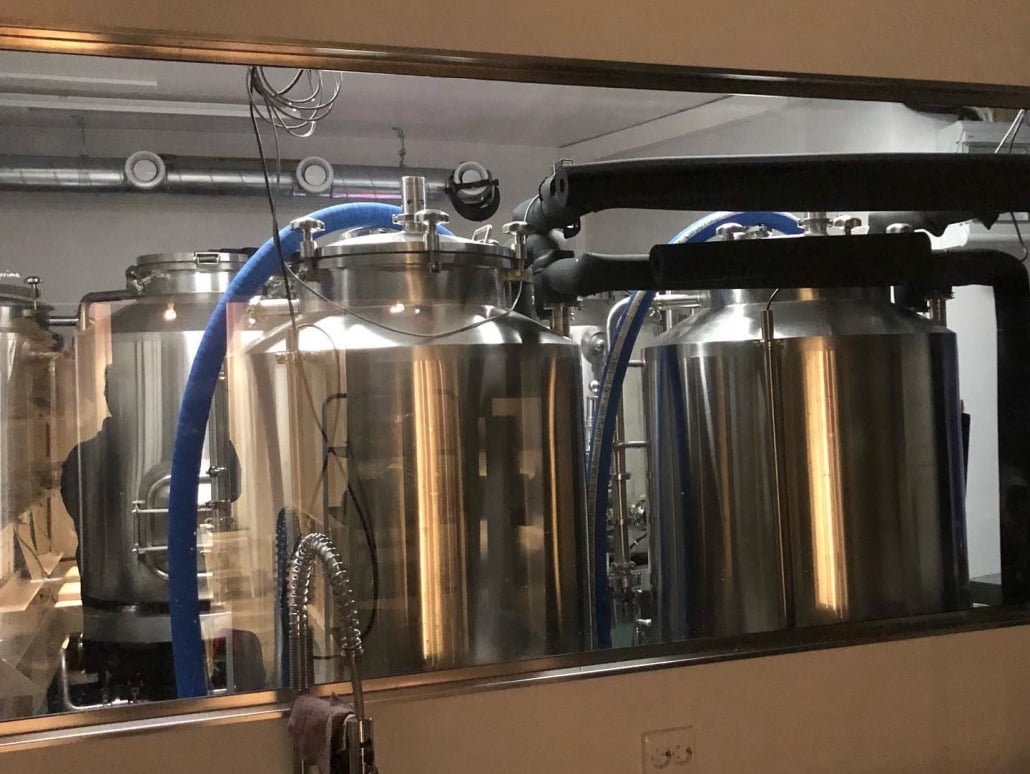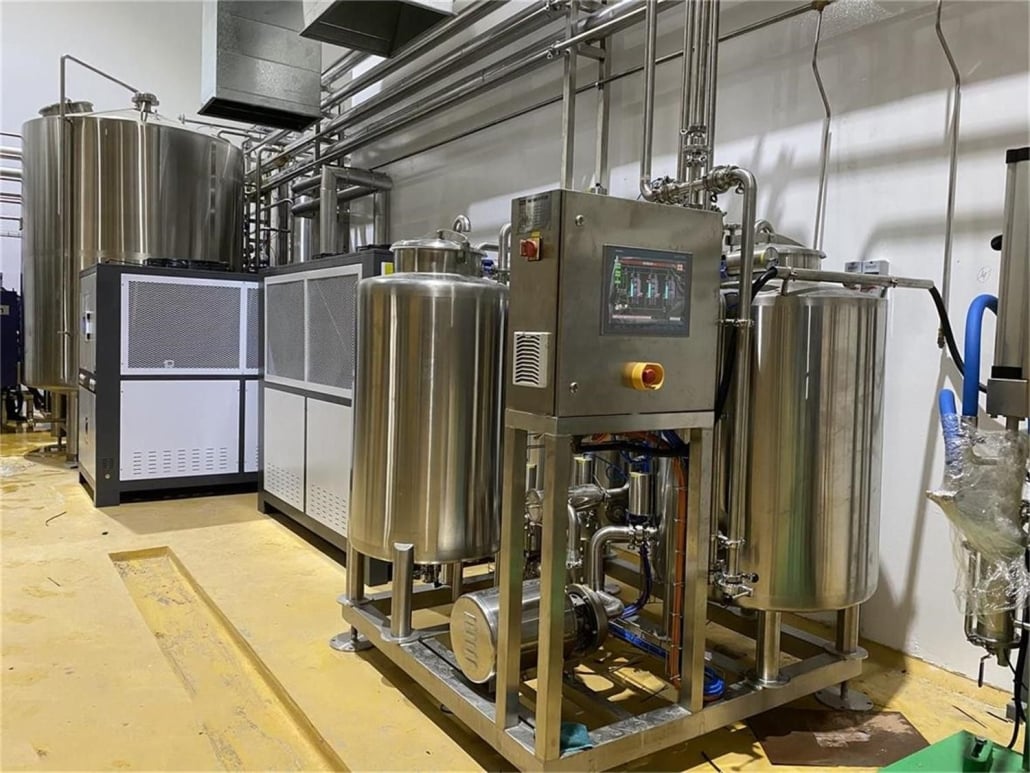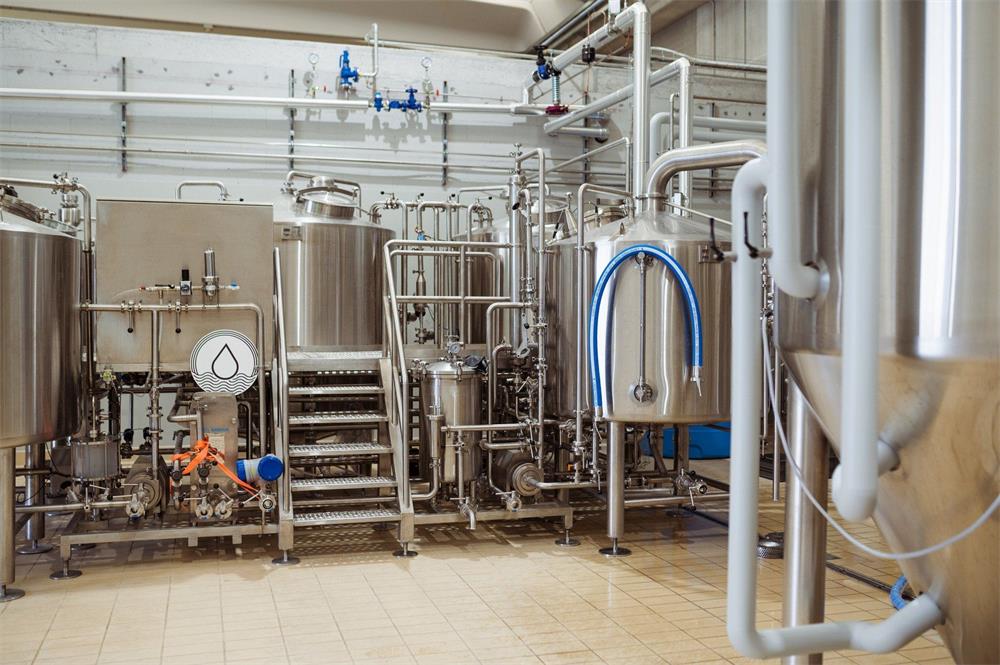Microbrewery for Sale
Are you dreaming of owning your own microbrewery? Maybe you’re passionate about craft beer, or perhaps you’re an entrepreneur seeking a lucrative investment. Whatever your reasons, you’re in the right place. Let’s dive into everything you need to know about finding and buying a microbrewery for sale.
Overview of Microbrewery for Sale
Buying a microbrewery for sale can be a complex process, but it’s also incredibly rewarding. This guide will walk you through the essential aspects, from understanding what a microbrewery is to navigating the buying process. We’ll cover equipment, brewing processes, space requirements, suppliers, and much more. By the end of this guide, you’ll have a comprehensive understanding of what it takes to own and operate a successful microbrewery.
Understanding the Microbrewery Business
What is a Microbrewery?
A microbrewery is a small brewery that produces beer on a much smaller scale than large-scale corporate breweries. They focus on quality, flavor, and unique brewing techniques, often experimenting with different ingredients and styles. Microbreweries typically produce less than 15,000 barrels of beer annually, making them a popular choice for craft beer enthusiasts and entrepreneurs alike.
Why Buy a Microbrewery?
Owning a microbrewery can be a fulfilling venture. It allows you to:
- Express Creativity: Experiment with unique recipes and brewing techniques.
- Build Community: Create a local hub for beer lovers.
- Achieve Financial Independence: Run a profitable business with growth potential.
- Satisfy a Passion: Turn a love for craft beer into a thriving enterprise.

Key Considerations When Buying a Microbrewery
Location and Market Demand
The success of your microbrewery heavily depends on its location and the local market demand. Research areas with a growing craft beer scene, tourist attractions, or college towns. Assess the competition and potential customer base to ensure there’s a market for your brews.
Financial Investment
Buying a microbrewery requires significant financial investment. Costs include the purchase price, equipment, licensing, and initial operating expenses. It’s crucial to have a clear understanding of your budget and potential financing options.
Business Plan and Strategy
A solid business plan is essential. It should outline your goals, target market, marketing strategy, and financial projections. This plan will guide your decisions and attract potential investors.
Equipment Guide for Microbreweries
Essential Equipment for Brewing
Running a successful microbrewery requires specific equipment. Here’s a detailed guide to the essential brewing equipment:
| Equipment Type | Description |
|---|---|
| Brew Kettle | Large pot used to boil wort, the liquid extracted from the mashing process. |
| Fermenter | Vessel where wort is fermented by yeast to produce beer. |
| Mash Tun | Insulated vessel where grains are mixed with water to extract sugars. |
| Heat Exchanger | Used to cool down the wort before fermentation. |
| Bright Tank | Vessel used for conditioning, carbonating, and packaging beer. |
| Kegging/Bottling Equipment | Equipment for packaging beer into kegs or bottles. |
| Cleaning System | Essential for maintaining hygiene and quality control. |
| Grain Mill | Used to crush grains for the brewing process. |
Additional Equipment
In addition to the core equipment, you might need:
- Pumps and Hoses: For transferring liquids between vessels.
- Refrigeration Units: For storing hops and yeast at proper temperatures.
- Laboratory Equipment: For quality control and testing.
Brewing Process Explained
Step-by-Step Brewing Process
The brewing process in a microbrewery involves several key steps:
- Mashing: Mixing malted barley with hot water to convert starches into fermentable sugars.
- Lautering: Separating the liquid wort from the grain husks.
- Boiling: Boiling the wort and adding hops for bitterness and aroma.
- Cooling: Rapidly cooling the wort to prepare it for fermentation.
- Fermentation: Adding yeast to the cooled wort to convert sugars into alcohol and CO2.
- Conditioning: Allowing the beer to mature and develop flavors.
- Packaging: Bottling or kegging the finished beer for distribution and sale.
Brewing Capacity and Space Requirements
When planning your microbrewery, consider the brewing capacity and space requirements:
| Capacity (Barrels per Year) | Required Space (Square Feet) | Description |
|---|---|---|
| Up to 500 | 500-1,000 | Ideal for small, local microbreweries. |
| 500-1,500 | 1,000-2,500 | Suitable for moderate-scale production. |
| 1,500-5,000 | 2,500-5,000 | Best for larger operations with regional reach. |
| 5,000+ | 5,000+ | For significant production and distribution. |
Design and Layout Considerations
A well-designed layout optimizes efficiency and workflow. Consider:
- Production Area: Space for brewing equipment and storage.
- Tasting Room: Area for customers to sample and enjoy your beer.
- Office Space: For administrative tasks and management.
- Storage: Adequate space for ingredients, packaging, and finished products.
Customization Options
Customizing your microbrewery can enhance your brand and operations:
- Branded Equipment: Custom logos and colors on equipment.
- Specialty Tanks: Unique fermenters or bright tanks for specific brewing needs.
- Advanced Technology: Automation and control systems for precision brewing.
Suppliers and Pricing
Finding Reliable Suppliers
Choosing the right suppliers is crucial for your microbrewery’s success. Here’s a table of potential suppliers and their price ranges:
| Supplier | Equipment Offered | Price Range ($) | Notable Features |
|---|---|---|---|
| Supplier A | Complete brewing systems | 50,000 – 200,000 | Customizable, reliable service |
| Supplier B | Individual brewing components | 10,000 – 100,000 | High-quality, durable equipment |
| Supplier C | Small-scale brewing kits | 5,000 – 50,000 | Affordable, ideal for startups |
| Supplier D | Advanced brewing technology and software | 20,000 – 150,000 | Innovative, high-tech solutions |
Installation, Operation, and Maintenance
Proper installation, operation, and maintenance are essential to ensure the longevity and efficiency of your brewing equipment. Here’s what to consider:
| Aspect | Details |
|---|---|
| Installation | Professional installation to ensure proper setup and safety compliance. |
| Operation | Training staff on equipment use and safety procedures. |
| Maintenance | Regular cleaning, inspections, and repairs to prevent downtime. |
Choosing the Right Supplier
How to Choose a Supplier
Selecting the right supplier involves considering several factors:
| Factor | Description |
|---|---|
| Quality | Ensure the supplier offers high-quality, durable equipment. |
| Reputation | Research reviews and testimonials from other brewers. |
| Customer Service | Evaluate the level of support and after-sales service provided. |
| Customization Options | Look for suppliers that offer customization to meet your specific needs. |
| Price | Compare pricing to ensure it fits within your budget without compromising quality. |
Pros and Cons of Buying a Microbrewery
Advantages and Limitations
Owning a microbrewery comes with its set of pros and cons. Here’s a comparison:
| Advantages | Limitations |
|---|---|
| Creative Freedom | High Initial Investment |
| Community Building | Regulatory Compliance |
| Potential for Profit | Operational Challenges |
| Brand Development | Market Competition |

FAQs
| Question | Answer |
|---|---|
| How much does it cost to buy a microbrewery? | Costs can range from $50,000 to over $500,000 depending on size, location, and equipment. |
| What licenses are required to operate a microbrewery? | You’ll need federal, state, and local licenses, including a brewer’s notice from the TTB. |
| How long does it take to start a microbrewery? | It can take several months to over a year to complete setup, licensing, and initial production. |
| Is owning a microbrewery profitable? | With the right business plan and market, a microbrewery can be highly profitable. |
| What are the main challenges of running a microbrewery? | Challenges include managing production, maintaining quality, and navigating regulations. |
Additional FAQs About Buying a Microbrewery
1) How do I value a microbrewery for sale?
- Look at trailing 12-month EBITDA, revenue mix (taproom vs. wholesale), capacity utilization, brand equity, and asset appraisals (brew house, fermenters, kegs). Many craft deals transact at 3–6x EBITDA depending on growth and distribution strength. Source: Brewers Association, Craft Brewer Insights.
2) What due diligence should I perform before making an offer?
- Verify licenses/permits status (TTB Brewer’s Notice, state manufacturing/retail permits), environmental compliance, lease terms and zoning, supplier contracts (malt, hops, CO2), equipment maintenance logs, QA/QC records, and distributor agreements (and any franchise-law constraints). Confirm inventory age and packaged beer freshness.
3) Should I buy existing equipment or invest in new systems?
- Used systems lower capex but may increase downtime and utility costs. Newer brewhouses with VFD pumps, heat recovery, and semi-automation often cut energy/water by 10–30% and improve consistency. Factor lead times (12–24 weeks) and installation costs into your timeline.
4) What staffing is required for a 7–15 bbl microbrewery?
- Typical core team: Head Brewer, Cellar/Packaging Tech, Taproom Manager, 2–4 FOH staff, part-time QA. Add a bookkeeper/ops lead as volumes grow. Cross-train for safety, CIP, and sensory.
5) How can I de-risk seasonality and cash flow?
- Diversify with taproom events, limited-release drops, wholesale mix, contract brewing in shoulder months, and memberships. Negotiate favorable payment terms with distributors and suppliers; maintain a rolling 13-week cash forecast.
2025 Industry Trends for Microbreweries
- Premiumization + fewer SKUs: Breweries are consolidating portfolios to 6–10 core SKUs while elevating flagship quality and packaging.
- Lager and low-ABV growth: Craft pilsners, Mexican lagers, and 3–5% ABV “all-day” beers gaining tap share.
- Taproom-first economics: Direct-to-consumer margins remain strongest; breweries expanding satellite taprooms within 1–2 hours’ drive.
- Sustainability as ROI: CO2 recovery, heat exchange, and water reuse projects now have sub-3-year paybacks due to higher utility costs.
- Distribution rationalization: Wholesalers favor proven velocity; new brands rely on hyperlocal sales and digital marketing.
- Alternative revenue: Contract brewing and private-label deals fill tanks and smooth cash flow.
- Regulatory notes (US): Direct-to-consumer shipping pilots expanding in select states; CO2 supply stabilization lowering price volatility.
2025 Snapshot: Craft Beer and Microbrewery Benchmarks
| Metric | 2023 | 2024 | 2025 (est.) | Notes/Source |
|---|---|---|---|---|
| US craft brewery count | ~9,500 | ~9,800 | ~9,900 | Brewers Association (BA) estimates |
| Craft volume growth YoY | -1% to 0% | 0–1% | 1–2% | BA, industry trackers |
| Taproom share of craft sales | 38% | 40% | 42% | BA; DTC outperforms wholesale |
| Avg. CO2 price ($/ton, spot) | $200–$300 | $150–$250 | $140–$220 | GasWorld/U.S. suppliers |
| Water usage (hl water/hl beer) best-in-class | 3.0–3.5 | 2.8–3.2 | 2.5–3.0 | MBAA, manufacturer data |
| Electricity intensity (kWh/hl) optimized | 10–14 | 9–13 | 8–12 | Vendor case data; heat recovery |
| Lager share of craft tap handles | 14% | 16% | 18–20% | On-premise audits (CGA/Nielsen) |
Authoritative references:
- Brewers Association: https://www.brewersassociation.org/
- MBAA Technical Quarterly: https://www.mbaa.com/
- CGA/NielsenIQ on-premise insights: https://www.cgastrategy.com/
- GasWorld industrial gases: https://www.gasworld.com/
Latest Research Cases
Case Study 1: Heat Recovery Retrofit Cuts Utilities (2024)
- Background: A 10 bbl microbrewery in the Midwest faced rising gas/electric bills and limited cellar capacity utilization (62%).
- Solution: Installed a wort–whirlpool heat exchanger with hot liquor tank (HLT) integration, added variable frequency drives (VFDs), and optimized CIP with low-foaming caustic and inline conductivity sensors.
- Results: 18% electricity reduction, 22% gas reduction, mash-in water preheated to 72°C using recovered heat, CIP time cut by 25%, annual utility savings ~$19,600, payback in 2.4 years. Source: Vendor whitepaper + MBAA presentations.
Case Study 2: Taproom-First SKU Rationalization (2025)
- Background: Coastal 15 bbl microbrewery with 18 rotating SKUs, stagnant wholesale velocity, and high packaging costs.
- Solution: Reduced to 8 core SKUs, shifted 60% volume to draft/taproom, piloted contract production of one flagship for regional chain accounts, launched quarterly lager program.
- Results: Gross margin +6.8 pts, packaged loss/scrap -30%, lager share up to 22% of taps, EBITDA margin +4 pts within 9 months. Sources: Internal ops report summarized at regional guild meeting; BA benchmark comparisons.
Expert Opinions
- Bart Watson, Chief Economist, Brewers Association
- Viewpoint: Sustainable growth in 2025 hinges on local relevance and taproom execution; wholesale wins require proven velocity and tight portfolios.
- Charlie Bamforth, Distinguished Professor Emeritus of Malting & Brewing Sciences, UC Davis
- Viewpoint: Quality stability—especially oxygen control and hygiene—remains the biggest differentiator for microbreweries scaling from taproom to distribution.
- Laura Ulrich, Brewer and Past President, Pink Boots Society
- Viewpoint: Diversifying consumer outreach with educational events and inclusive taproom culture boosts loyalty and trial, particularly for lager and low-ABV lines.
Citations:
- Brewers Association economist posts: https://www.brewersassociation.org/
- UC Davis Brewing resources: https://foodsci.ucdavis.edu/
- Pink Boots Society: https://www.pinkbootssociety.org/
Practical Tools and Resources
- Brewers Association (market data, safety, BA Draught Quality Manual): https://www.brewersassociation.org/
- TTB Brewer’s Notice application and permits: https://www.ttb.gov/beer
- State guilds directory (regulatory updates, peer networking): https://www.brewersassociation.org/directories/brewers-guilds/
- MBAA (technical papers, webinars, CIP best practices): https://www.mbaa.com/
- Draught Quality Resources (Brewers Association): https://www.draughtquality.org/
- Water and utility benchmarking (Alliance for Water Stewardship): https://a4ws.org/
- Used equipment marketplaces (due diligence on condition/age):
- ProBrewer Classifieds: https://discussions.probrewer.com/
- BrewBids: https://www.brewbids.com/
- Brewery planning calculators:
- Beer30/OrchestratedBEER (production ERP/MRP): https://the5thingredient.com/ and https://orchestrated.beer/
- BA Cost of Goods and Margin tools (member resources)
Note: Always verify current state franchise laws and self-distribution allowances via your state guild or alcohol beverage control agency before signing distributor agreements.
Last updated: 2025-09-29
Changelog: Added 5 new FAQs, 2025 trend analysis with benchmark table, two 2024/2025 case studies, expert opinions with citations, and practical tools/resources list
Next review date & triggers: 2026-02-01 or earlier if new BA annual reports, state DTC/shipping law changes, or major utility price shifts occur
Share this entry
Interested in learning more about Brewing Systems including additional details and pricing information? Please use the form below to contact us!
YOLONG BREWERY EQUIPMENT FAQS
- Commercial Brewery / Craft Brewery / Microbrewery / Nanobrewery
- What is The Difference Between Craft Beer and Industrial Beer?
- The Bespoke Differences In Custom Brewing Systems
- Everything You Need to Know About Kettle Souring
- How to Choose Brewing Equipment for Your business?
- How To Choose The-Best Partner To Build Your Commercial Microbrewing System?
- Two Detection Sensors That You Need To Use In Your Brewhouse System
- Remote Control Applications in Brewing Equipment/How does it work?
- How To Clean Your Brand New Brewery Tanks?

